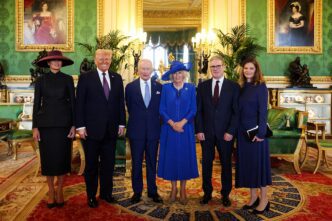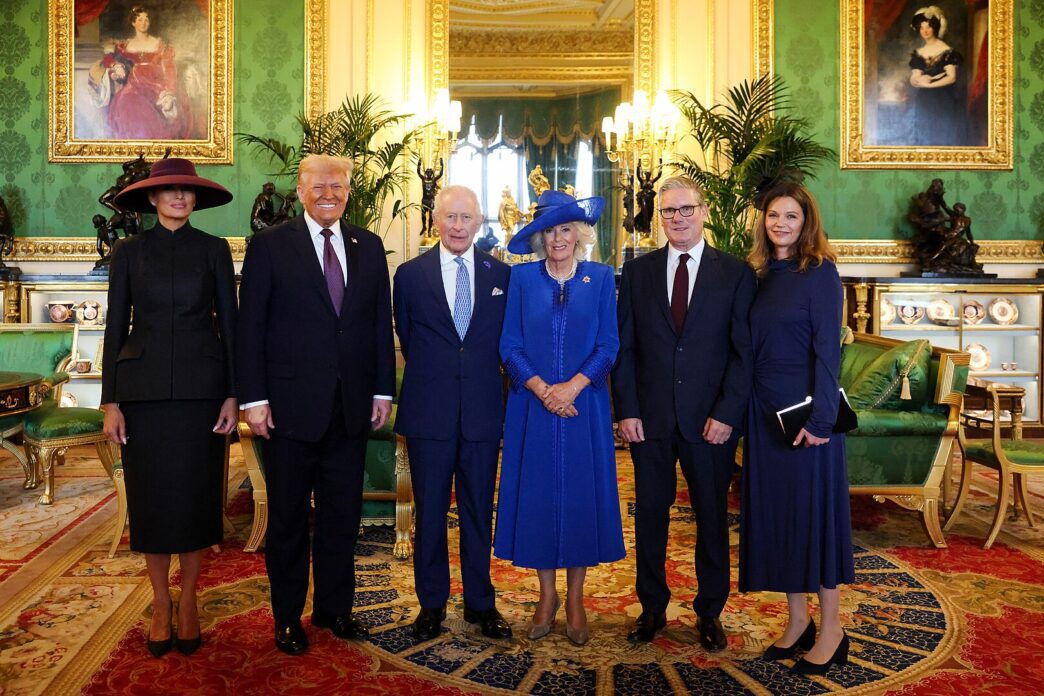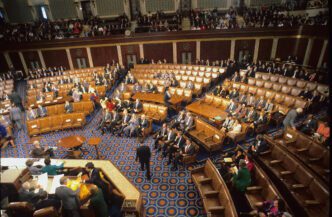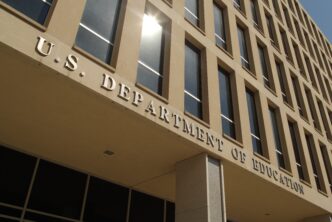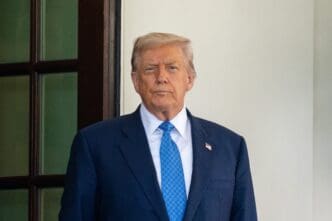Executive Summary
The Story So Far
Why This Matters
Who Thinks What?
President Donald Trump received a welcome of significant royal pageantry during his recent state visit to the United Kingdom, characterized by lavish ceremonies designed to appeal to his appreciation for grandeur while serving Britain’s strategic diplomatic interests. The elaborate reception, which included dining with King Charles III and Catherine, Princess of Wales, at Windsor Castle, aimed to secure favorable trade relations, investment, and support for Ukraine from a potentially isolationist US administration.
A Welcome Fit for a King
The visit was marked by pomp and ceremony, with bagpipers and guards in bearskins marching in Trump’s honor. Trump expressed that the experience was “truly one of the highest honors of my life,” highlighting his affinity for such displays. This level of flattery is a long-practiced art by the British monarchy, which has historically engaged in strategic diplomacy.
Britain’s government had clear objectives for the visit, seeking to temper Trump’s more mercurial instincts. They hoped to secure better tariff rates, attract investment for their economy, and gain cash to develop an artificial intelligence powerhouse. A key aim was also to persuade Trump not to abandon Ukraine to Russia.
Symbolism and Subtlety
The pageantry, while grand, also presented a jarring fairytale, showcasing rituals of a “vanished empire.” This contrast underscored Britain’s current reliance on the United States for its defense and economic well-being, despite its ability to lay on military displays. King Charles subtly recalled historical figures like George Washington and John Adams, who expressed distaste for bowing before the monarchy.
Trump’s comfort within the royal court was seen by some as a commentary on an American head of state who appears more akin to “indifferent all-powerful monarchs” than to the Founding Fathers’ understanding of power’s responsibilities. Diplomacy often involves unpalatable decisions, and this visit was a reminder that many nations have chosen to appeal to Trump’s vanity to manage his approach.
Domestic Political Challenges
Beyond the optics, Trump’s visit posed a significant challenge for British Prime Minister Keir Starmer’s government, which recently won a landslide election but is facing a deep political crisis. Starmer garnered praise for his handling of Trump, securing a 10% tariff on British exports to the US, lower than that imposed on the European Union. He is also a leading player in the “coalition of the willing” offering post-war security guarantees to Ukraine, which requires Trump’s support.
However, Starmer is navigating a dangerous political landscape, as many Britons view Trump as a controversial figure whose values are antithetical to Western ideals. Public antipathy towards Trump contrasts with the rise of populist politics in the UK, exemplified by the anti-immigrant Reform Party led by Nigel Farage, which is currently leading in polls and could disrupt the traditional Labour-Conservative dominance.
Interference and Allegations
Concerns about interference in UK politics by Trump’s administration were also highlighted. Vice President JD Vance criticized Britain over freedom of speech, and Trump’s team is reportedly pressuring Britain to amend restrictions on online extremist material to suit US tech firms. Elon Musk, an erstwhile Trump ally, also called for a “revolution” at a far-right rally in London.
The political balancing act became more complicated when Starmer was forced to dismiss UK ambassador to Washington Peter Mandelson over his past friendship with Jeffrey Epstein. This incident drew further attention to Trump’s own past association with Epstein, and the monarchy was not immune, with Prince Andrew having been removed from official duties due to his links to the convicted sex offender.
Protesters projected images of Trump and Epstein onto Windsor Castle, reflecting the sentiment of many Britons who believed Trump should not have been invited. London Mayor Sadiq Khan, a vocal critic, argued that the UK should “speak truth to power” rather than flatter a president he believes has fueled “divisive, far-right politics around the world.”
Historical Echoes
Trump’s reception, despite the protests, was not entirely unprecedented. President Ronald Reagan’s 1982 state visit, marked by concerns over his hawkish rhetoric, was smoothed over by Queen Elizabeth II, who famously joined him for a horseback ride at Windsor Castle. Left-wing Labour MP Tony Benn’s diary entry from that time, describing Reagan as a “movie star acting the part of a king,” resonated with contemporary Trump skeptics.
King Charles, despite private views that often clash with Trump’s, demonstrated significant diplomatic skill, adhering to the monarchy’s constitutional impartiality. He has shown a deft touch in post-Brexit diplomacy, speaking fluent German and French during visits. His presence alongside Trump at Windsor also subtly recalled his visit to Ottawa as King of Canada, affirming the country’s sovereignty amidst demands from Trump that it become the 51st state.
The Churchill Connection
The visit also included a focus on Prime Minister Winston Churchill, a historical figure deeply revered by Trump. On Thursday, Trump was expected to visit Chequers, the prime minister’s country residence, to view archives related to Churchill. Trump made a point of mentioning that the bust of the wartime leader, often seen as a barometer of the “special relationship,” had been restored to the Oval Office.
The emphasis on Churchill is significant, as his legend serves as a powerful symbol of British identity and a lament for lost imperial power. The article recounts Churchill’s moment of relief at Chequers in December 1941, upon learning of the Pearl Harbor attack, which drew the United States into World War II. Churchill, who had previously described pre-war US isolationism as a “vague blur on the horizon to friend or foe,” famously wrote that he “slept the sleep of the saved and thankful” that night, recognizing US involvement as crucial for defeating the Nazis and imperial Japan. This historical account now reads as a striking summation of Trump’s “America First” policies.
While the “special relationship” between the UK and US has often been taken more seriously in London than in Washington, Britain hopes Trump will depart sharing sentiments akin to President Franklin Roosevelt’s message to Churchill on the night of Pearl Harbor: “We are all in the same boat now.” King Charles’s recent remark that “tyranny once again threatens Europe” underscores the UK’s desire for continued US engagement.

